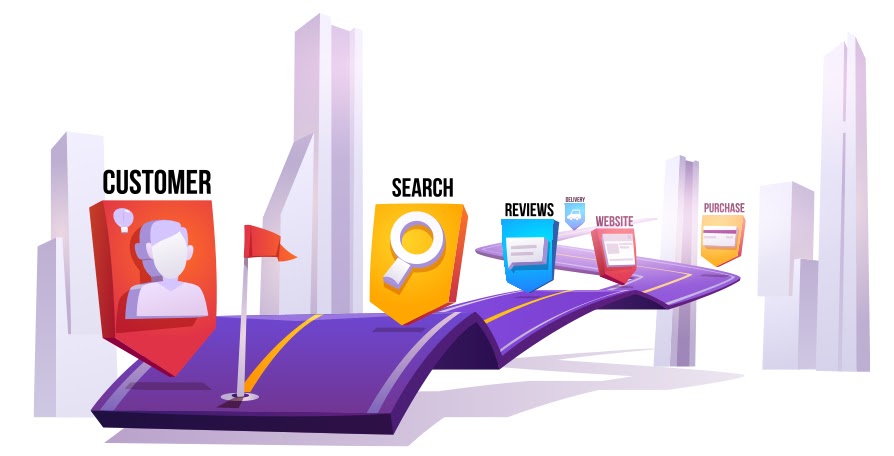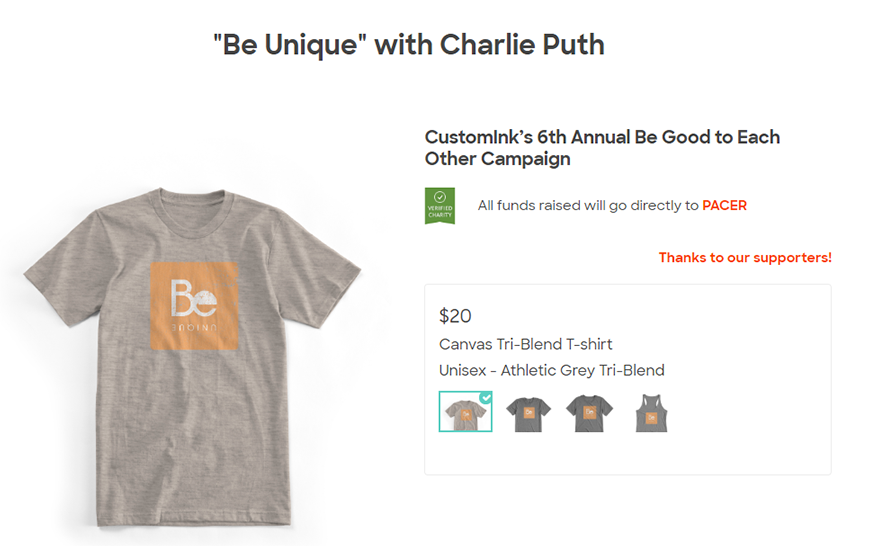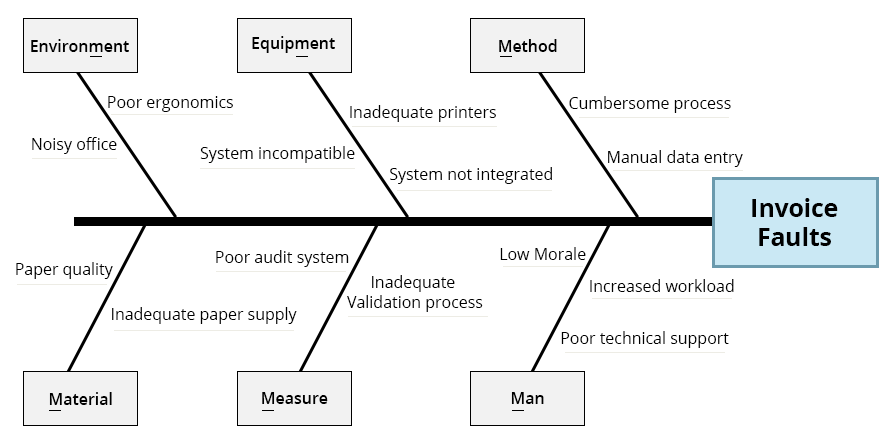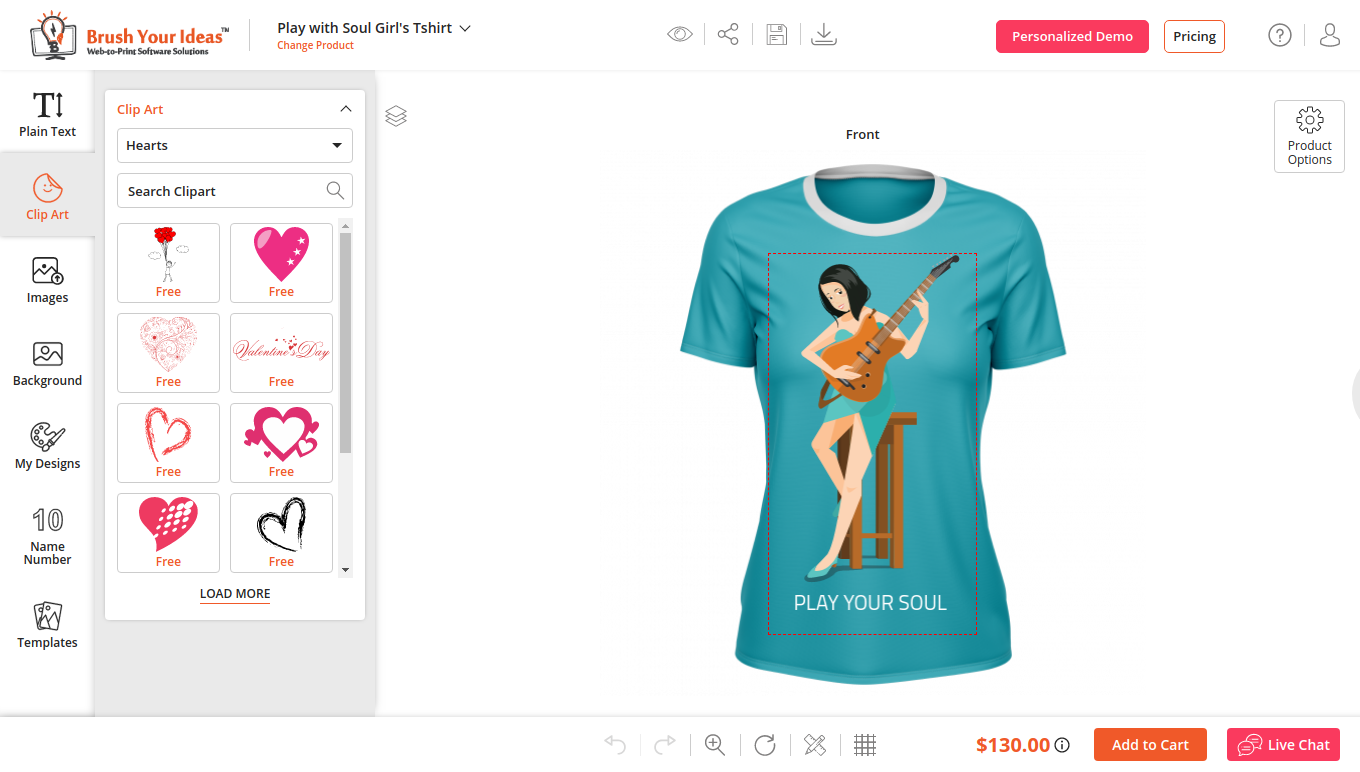The print business size in 2021 of the U.S. alone is expected to be $68.7bn. Print businesses are not only highly competitive; technological advancements and ever-evolving trends also propel them. Competition is one of the most substantial factors why many print businesses fail. So, how are you planning to stand-out in such an environment?
To make the most of the opportunities, it is essential to constantly update your print business and make it more agile. All the print optimization techniques directly co-align and narrow down to one purpose: to get customers for the printing business. An increase in customers means increased print sales.
Increasing overall print sales depends upon how agile the print business is to the latest market trends. In this article, we will explore some modern-day techniques to get customers for the printing business. Here’s a fail-proof plan:
- Know the Common Challenges faced by Print Entrepreneurs
- Inbound Marketing: A Sheer Necessity
- Keep Your Competitors in Check
- Do a Root Cause Analysis Regularly
- Reassess Your Marketing Strategies
- Correspondence with Technological Trends
- Inspect Your Operational Costs
- Increase Your Print Sales: Work with Experts
1. Know the Common Challenges faced by Print Entrepreneurs
Nowadays, everyone is harnessing the power of the internet to boost print sales. And like any other print business, you would want to do the same. But how do you make it possible? In such a scenario, the first step to getting customers for print business would be to know the most common print companies’ most common challenges. Here’s an exhaustive list.
I. Lack of Branding through Unique Selling Proposition
Different forms of marketing strategies stem from different philosophies about how to attract new customers. USP is one of the most misapprehended elements of a successful print sales leaflet. It is what makes your products different from your rivals.
USP is closely associated with branding. USPs make your brand more recognizable to potential customers. So whenever they need anything that you have to offer, they know where to go. It makes your business all the more lucrative.
Example: Airbnb
When someone mentions Airbnb, chances are your brain automatically responds with “unique places to stay.” They have done a great job summarizing a huge variety of unique places that you cannot typically find on other similar platforms.
Airbnb USP Tagline: Book unique places to stay and things to do. This line associates their entire identity with unique places. The brand is stuck in your head — so when you’re looking for unique places to stay during your vacation, you’ll automatically know where to go. Not just that, we can also see their intent towards adding value to our experiences by suggesting various activities during travel.
Hence, you need to associate USP with the products that your target audience seeks. However, it is also important to note that most people viewing your advertisements are not immediately looking for printing services at that time. What you’re hoping here is that they remember you when they need printing services. Therefore, it is utterly important to find a very specific USP for your niche.
II. Technological Challenges and Personalization trends
A lot of print owners believe that print businesses are declining because demands are low. Well, that is not entirely accurate. Most businesses fail because the technology they use lacks to catch up with the latest trends.
The print industry is the one that needs constant up-gradation to meet new-age demands. This is where industry education can play a huge role. Several printing companies such as VistaPrint, Zazzle, etc., are continuously researching to upgrade their offerings. Once you know the latest trends, all you need to do is invest in the right tools to offer those trends.
The most recent trend in the print industry is that of product personalization. Product personalization is the best way to attract customers. It also contributes to retaining the customers. Personalization means letting your customers design the products as they want.
There is a huge difference between a product bought and a product created specifically for a particular customer. Customers value the latter more. 36% of the customers in the U.S. covet customized products, and surprisingly 1 in 5 of these shoppers are okay with paying 20% more for them. 48% of customers are ready to prolong the wait time for personalized products.
Product customization also helps your customers evolve into brand ambassadors. As they carry your products around the world with them, the visibility of your products also increases. Hence, you can easily reach a wider audience and get customers for printing businesses across the world.
So, if you’re thinking of adding this lucrative feature to your print business, we have the perfect tool for you. Brush Your Ideas has fully-flexible and the most efficient online product design tool. It understands your business feasibility and provides a custom UI for you to control where your end-users can perform customizations. Take a live demo and find out yourself!
III. Loopholes in Marketing Strategies
We live in a world that transacts information within seconds. A strong marketing strategy is the lifeblood of any company. It is incredibly important to ensure that your organization is going in the right direction. If not done correctly, it can directly harm your print sales.
Print Businesses must focus on preventing these loopholes. We will take a nosedive into the dos and don’ts of marketing in the later section of this article. But first, let us find out what these loopholes are:
- Targeting the wrong audience: Often, marketing strategies lack a specific overview of their target audience. This leads to chaos. It also means that you’re diverting your capital to a set audience with little to no return on investment back your way.
- Generating the wrong type of leads: Invest in meaningful programs that offer long-term value rather than just focusing on the short-term results. Attracting a huge set of audience is fine for short-term purposes to stay afloat. But to sustain, you will also need loyal customers with higher lifetime value.
- Promoting high discount offers: Discounting is a good strategy, but providing higher discounts may not be as effective as it seems. Sometimes it may lead to a severe dent in the quality of your product and brand image.
One of the loopholes is not having an inbound marketing strategy. You need to make sure that you’re investing in both kinds of marketing; inbound and outbound. A company practicing inbound marketing performs way better than the ones that don’t. Want to know why? Keep reading!
2. Inbound Marketing: A Sheer Necessity
Inbound marketing is a business technique to attract customers by creating valuable content and experiences. Inbound marketing forms connections between the brand and the customers. Inbound marketing helps you make the customers aware that you can help them solve their problems. It aims to attract potential customers long before they might be ready to buy. Here’s why inbound marketing is utterly necessary:
5 Key Reasons to Have an Inbound Marketing Strategy
- Inbound marketing can transform your website into a sales and marketing tool that works round the clock. Customers can reach you for solutions at any time and from anywhere. This directly reflects upon your print sales.
- With a highly-effective, more focused advertising spent on inbound marketing, your print business can save money and experience higher ROI over time. It also simplifies your marketing efforts.
- 85% of customers conduct online research before buying. When you empower your customers to find you naturally through their research, you come across as trustworthy. Inbound marketing techniques help you leverage social proof and gain customer trust and credibility.
- Inbound marketing is not just about creating brand awareness. It drives quality traffic and generates numerous leads. It helps the print business owners attract targeted leads and make an informed approach towards retaining customers.
- Digital inbound marketing allows print businesses to learn and evolve. You can engage with your customers on multiple social media channels and get their feedback. This also helps you better understand your products and services.
Now that you know how important it is to have an inbound marketing strategy for your print business let us try to frame one for your niche. The first step would be to understand the consumer’s journey.
Understanding the Buyer’s Journey

While working on framing the inbound marketing strategies, the aim is to attract potential customers long before they’re ready to buy the product. Most parts of these strategies involve guiding the customers on their journey towards making the decision. Hence, it is important to understand the four stages of the buyer’s journey.
- Awareness
Nobody wakes up in the morning and decides that they’re going to buy a specific product. It starts with them facing certain problems and realizing that they need a product to solve those problems. This is the awareness stage. It is the time when customers are experiencing a problem that they need to solve. This is when you attract customers.
- Consideration
Once they’re aware of their problems, the consideration stage comes next. When customers have defined their problem and are actively looking for a solution, that stage is known as the consideration stage.
- Decision
Converting buyer’s consideration to buy a product into their decision in buying YOUR product is what inbound marketing is all about. Once the customer is out looking to solve their problem, you need to make sure they find you.
- Purchase
So, now the buyer is ready to choose the best solution and the best provider. This stage is known as the purchase stage. Make sure you provide them enough options to reach you. Also, make sure that you address their queries and respond to them quickly.
Now you know the four stages of the buyer’s journey. Here’s what you need to do to frame an efficient inbound marketing strategy for your print business.
Inbound Marketing Strategy for Your Niche
There are multiple ways to execute inbound marketing. But if you want to get it right, you need to have a strategy specifically designed for your niche in place. It involves knowing what customers want at a certain point in their journey. Once you know it, you can create content that aligns with their needs.
Following is a three-step approach to frame an efficient inbound strategy for your print business.
Step I: Attract Visitors
When the customers are in their awareness stage, that is precisely the time to attract potential leads and make them aware of your offerings. This involves creating content that provides value and making sure that it reaches the target customers.
- Content Creation: This is the most effective way to attract potential customers. It includes blogging, making videos, publishing case studies, FAQs, and technical guides. Infographics are also a unique way to share content. They’re highly shareable, engaging, and attractive in terms of design.
- Search Engine Optimization: In inbound marketing, quality content and SEO both work together to attract visitors. After creating the content, you need to optimize it for search engines so it shows up in front of the right audience at the right time.
- Social Media: This is a crucial part of the inbound marketing strategy. It can get your content a lot of visibility. Discoverability is critical for your business’s credibility, and social media gives you just that.
Find out which platforms are relevant to your target audience. Find out where your audience spends the most time. And then create a social media marketing account on those platforms. Regularly share and promote your content on those platforms.
Step II. Convert Visitors into leads
Once you’ve attracted your customers, the next step is to encourage them to find out more about your offerings. The conversion of visitors into leads starts by getting your hands on visitors’ contact information.
- Opt-in Forms: Gather basic personal information from your visitors to optimize for conversions, make sure your opt-in form is prominent and easy to fill. Fewer fields or multi-step forms are also preferable. You can also take information like their birth dates to send personalized messages and offers to your customers on that day.
- Landing Pages: A landing page is what potential customers see when they click your ad or link. You need to optimize this page to encourage visitors to sign up or subscribe to your website.
- Calls-to-Action: A CTA is a visual way to convince visitors to take action. A compelling CTA is short, clear, and action-oriented. You can use these buttons to drive your customers to your offerings. For example, if you have a product design tool, you can offer free design trials and then direct them to your design tool through CTAs.
Step III. Nurture Leads into Customers and Delight Them
The whole point of collecting leads is so you can communicate with them to buy your products. You reach out to potential customers and show them how your product benefits them. For example, you can give a live demo of your product design tool and then let them try design products themselves.
Once the customers try your tool and order from you, all you have to do is maintain them. The next step would be to retain your customers and convert them into loyal customers. Here’s how you can do that:
- Exceptional Customer Support: Excellent customer support is crucial to building customer loyalty. If the customers are not satisfied with your offerings, then they may never return. Streamline your customer support to address their concerns promptly.
- Surveys: Send surveys to your customers and ask them to review your products and services. Reach out to them via email, SMS, and other channels to collect their thoughts and opinions on improving your services for their benefit.
3. Keep a Check on Your Competitors
The ease of quick access and visibility through the internet has amplified the print business’s competition exponentially. You are no longer competing with just a few local businesses. You’ve got to worry about the global brands as well.
Hence, keeping a constant check on your competitors is the next thing you need to do to get customers for the printing business. Countless factors are influencing your print sales. Your competition plays a huge role in the success of your business. That is why it is important to take proper steps to gain a competitive advantage by constantly updating and learning from your competitors.
Once you know what your competitors are offering, you only need to ask yourself the following questions: “What makes your company unique?”, “What factors will help you stand out?”, “Why would a customer buy from you over your competitors?” Once you answer these questions correctly, you are good to go! Here are two popular trendsetters of the print industry and key takeaways from their businesses.
I. CustomInk
CustomInk is known for its impeccable designs and customer service. Their team reviews everyday orders and everyday designs for sizing, contrast, and layering issues. If the uploaded design doesn’t look the way customers want, they enhance and recreate it to ensure perfect printing. They even send their customers a sample upon request for extra complicated designs.
They offer free standard ground shipping within the continental U.S. and Canada. They guarantee the arrival of their products at the customer’s door in 2 weeks or less. In 2016 they launched a fundraising campaign, “Be Unique,” against bullying, featuring the famous singer Charlie Puth. They designed multiple t-shirts with anti-bullying content, which eventually led to significant traffic on their websites.

Key Takeaway: Just providing product customization is not enough; you need a technical support staff that helps customers during and after the designing process. You must also offer timely shipping and let your customers track the order lifecycle. With Brush Your Ideas, you can design all the products, simple to complex, within minutes.
II. Vistaprint
Vistaprint offers a wide variety of products to its customers. If you visit their website and check their catalog, you’ll find how neatly they’ve categorized and even sub-categorized their products. This simplifies the customer’s job and makes product navigation simple for them.
A lot of print businesses offer great discounts if the customer makes high quantity purchases. But Vistaprint aces this race by offering lucrative deals at low quantity purchases. They have a whole section of their website dedicated to the same.

Key Takeaway: Offering a wide variety of products will always work well for you. Never rule out the possibility of expanding and offering other products. This is important to keep in mind because you’ll need a product design tool to design various products.
Brush Your Ideas lets you design products for every printable material. Want to know how? Click below to find out.
4. Do a Root Cause Analysis Regularly
Even after implementing everything correctly, you may still face setbacks. And sometimes it becomes difficult to find out what you’re doing wrong. Therefore, it is important to have a strategized technique to find out the cause whenever you face a setback. Ideally, all print businesses must carry out a root cause analysis regularly.
A systematic approach is important because you want to identify the cause correctly. Identifying incorrect root causes can lead companies down to unproductive solutions. The wrong inspection may lead to confusion and chaos, with the problem still on hand and no solution.
A root cause analysis enables you to explore all of the things that could cause it. Cause and effect analysis gives you a helpful way of doing this. The fishbone diagram-based technique combines brainstorming with a type of map. It pushes you to consider all possible causes of a problem, especially underlying causes.

Example: Fishbone diagram for the problem of invoice faults.
You can also use multiple tools for doing the same. And, if you do not want to do it yourself, you can always ask for help. Our experts at Brush Your Ideas can brainstorm the most underlying problems from your workflow and propose relevant solutions.
5. Reassess Your Marketing Strategies
There is no one marketing strategy to ace the print industry. As we noticed earlier, all the processes need constant updating according to present trends. And so do the marketing strategies. Here are some pointers that you need to keep in mind while framing your marketing strategies:
Micro Audience for Macro Win
The most common mistake that every business makes is that it has a common marketing strategy for all types of audiences. You need to have micro-targeting strategies. Micro-targeting is one of the best strategies to get customers for the printing business, especially in the digital age.
This method uses a customer’s data like browsing, shopping, and location to subdivide customers into smaller, more individualized groups for marketing purposes. Print businesses can use this data to create online advertising campaigns that focus on specific, niche groups. These micro-segments contain very few customers each. Hence, it makes personalized analysis of smaller groups and marketing optimization possible.
If businesses can analyze how different marketing actions affect consumer spending behavior, they can catch the pin-points of their buying action. They can predict the varying effectiveness levels of different marketing actions on different micro-segments. And hence, frame relevant marketing strategies.
You must be wondering how to implement this strategy for your print business. Let’s say you’re selling personalized t-shirts, and you want to target a vast customer base for all types of t-shirts. Start with selecting a specific t-shirt and brainstorm who will be your audience. Refine your marketing strategies around those audiences and implement them. Once you implement that strategy, analyze the results. See how the audience reacts to it. Analyze if you can do the same to a larger customer base. If yes, then frame a plan on “How to market it to a larger customer base?” You can do all this by yourself or simply let us do it for you.
6. Correspondence with Technological Trends
Keeping your technology up-to-date is vital to get customers for the printing business. Unpleasant technological experience can drive major customers away. Your website is the first part of your brand that customers interact with.

The above-mentioned models and strategies will only work if you take care of the user experience completely. A good UX can make a brand popular, and a bad one can lead to your downfall. Not just the website, this is valid for all the technical setup that you’re using, like your product design tool, printing equipment, e-commerce app (if you have one), website, and so on. Let’s look at ways to optimize your technology to get as many customers as possible for your print business.
I. Website’s UI, UX, and their Functioning
You can optimize the UX for your website by thinking about your users and their journey within the website. Brainstorm questions like “How will your users utilize your website?”, “Where does it make the most sense to put an ad or a CTA button?” and so on.
If you’re offering product customization, you need to select a product design tool that doesn’t hinder the customer’s designing experience. Your customers should be able to design even complex ideas with ease.
II. Does your Audience Expect an App?
Market research shows that people spend 90% of their time on mobile apps. The ecommerce industry in the U.S. observed a massive increase of around 48% in mobile apps. At present, nearly 54% of e-commerce transactions take place through mobile-apps in the North-American region. When you’re on the crusade to get customers for the printing business, it is important to address whether or not your audience expects an app.
If you have a broad customer base, then surely you need an app. Getting an app not only adds to the brand image but also lets you cover a larger customer base while giving a personalized experience to your clients. Getting an app of your own can boost print sales to an extent you cannot imagine. Even if you have a smaller customer base and are just beginning, getting an app won’t hurt your pocket.
Nowadays, you can create and launch your app within days or sometimes within hours. Multiple app-builder companies offer a hassle-free and straightforward way and can get you up and running within hours.
III. Performance of Product Personalization tool
Last but not least is the performance of your personalization tool. The simpler the tools, the more likely customers are to design and buy products from you. An easy-to-use product personalization tool must provide diverse features for your customers to create unique designs.
An Intuitive W2P product design tool consists of everything you would expect from an online product design tool, from diverse customization features to print-ready designs. Ideally, most tools provide a vast library of images, texts, clipart, and ready templates. A fully-responsive designer tool is also perfect to create personalized designs on every printable material. It can have element-based pricing, design-based pricing, and so on. Hence pick a tool that gives you full control over its offerings and flexibility.

Brush Your Ideas is one such tool. Understanding your business feasibility also provides a custom UI for you to control where your end-users can perform customizations. Plus, it offers multiple integrations and can work with multiple platforms. Explore Brush Your Ideas Product Design Software for Magento, WooCommerce, OpenCart, Shopify, PrestaShop, PHP, and more.
7. Inspect Your Operational Costs
The last but most important thing to think about while framing strategies to get customers for the printing business is to prevent leakage from print sales profit. You can do this by using the root cause analysis technique to determine the problems leading to the leakage.
The best way to save any type of leakage happening through operational processes is to adopt an ERP tool. ERP stands for enterprise resource planning. It helps you plan and manage all the core supply chain, manufacturing, services, financial, and other organizational processes. Here are some advantages of using an ERP tool:
- It enables enhanced business reporting with real-time information.
- You can connect all the processes and workflows to an integrated database. Hence, making order management easier.
- It helps you provide better customer service as you have quick access to customer information. It helps you improve the response time and increase order accuracy.
- ERP tool helps you prevent all the cost leakages by improving the inventory management process.
- As you can automate your supplies through an ERP tool, it helps you improve your relations with third-party vendors and suppliers.
- Through ERP tools, you can boost your cash flow. Features like better invoicing and better collection tools can help you bring in the cash faster.
- It also provides security to all your customers and supply data. You can easily distribute your data across multiple servers in a secure manner.
- It makes the overall system and workflow efficient. Through automation, you can implement smarter workflows.
- ERP tools help you increase transparency in your supply chain management.
- It also helps you reduce the production bottleneck. It enables you to deliver faster than your competitors. The faster you deliver, the more you get customers for the printing business.
Brush Your Ideas ERP software has everything that you would require to maintain a glitch-free print production cycle. It covers all the benefits mentioned above. Compatible with every system and integrable with all the platforms, it fulfills all your print requirements. It includes inventory manager, print job manager, barcode manager, order manager, progress reports, custom theme, and more. Try our free demo to find out!
8. Increase Your Print Sales: Work with Experts.
It is necessary to be economical and innovative to grow your business, get customers for the printing business, and boost your print sales. You can increase both your capabilities and offerings simply by following the tips listed above. We sincerely hope that this guide was able to answer all your questions on “How to get customers for printing business?”
Brush Your Ideas believes in ideas that benefit our customers and the world. We are a website development company specializing in web-to-print products such as ERP software solutions and product design tools. In due course of 14+ years, we have touched the lives of 70+ clients worldwide in the web-to-print space. Our goal is to provide web-to-print products that are efficient, easy to manage, and light on the pocket. We are experts in niche-based strategizing of products in the e-commerce marketplace. If you need any help in building customer loyalty strategies, marketing and monetization strategies, product strategies, and so on, we’re just a click away.
All product and company names are trademarks™, registered® or copyright© trademarks of their respective holders. Use of them does not imply any affiliation with or endorsement by them.








Follow with us